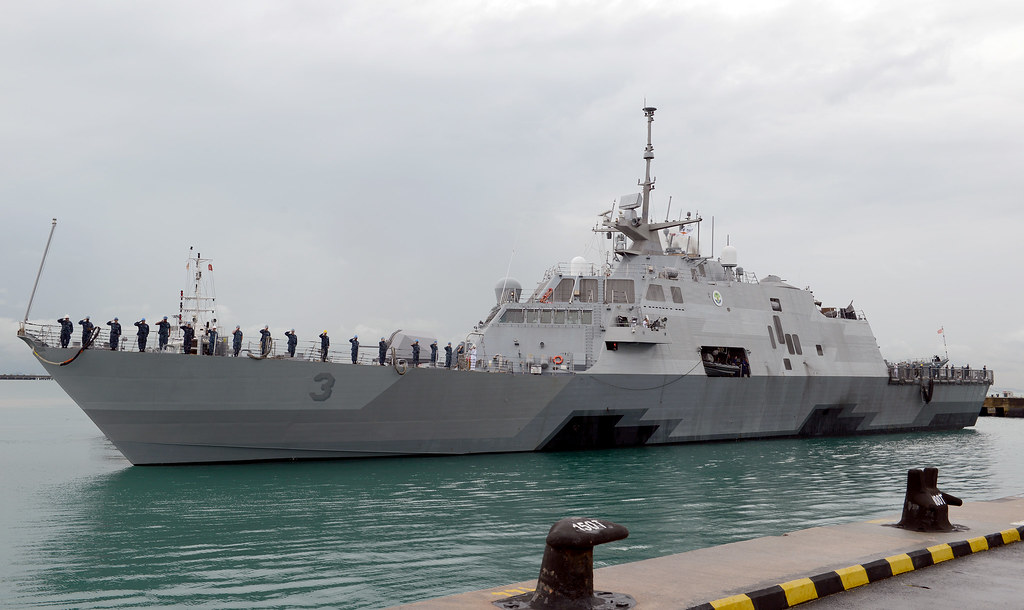By Mass Communication Specialist 2nd Class Antonio P. Turretto Ramos
<< In this file photo, USS Fort Worth (LCS 3) arrives in Singapore in December. (U.S. Navy/MC1 Jay C. Pugh)
CHANGI NAVAL BASE, Singapore - The littoral combat ship USS Fort Worth (LCS 3) got underway from Singapore Feb. 2 after completing her first scheduled preventive maintenance period during a maiden 16-month rotational deployment to the Indo-Asia-Pacific region.
Begun Jan. 19, shortly after Fort Worth returned from supporting multinational Air Asia search efforts in the Java Sea, the maintenance period included more than 400 checks of engineering, deck and combat systems. Compared to other Navy ship platforms, the littoral combat ship has a relatively small crew. Labor and technical support during Fort Worth’s deployment is supplemented by civilian contractors who conduct most of the preventative maintenance schedule (PMS) work in port.
“The contractors take a lot of the smaller checks and fixes off our plate,” said Gas Turbine Systems Technician (Electrical) 1st Class Cody Street. “It makes it easier for a relatively small core engineering department to focus on bigger fixes and operating the ship.”
With civilian contractors focused on the smaller PMS checks, the overall process is much faster, according to Street, who has also served on other ship platforms. It would normally take an entire department three weeks to complete about 1,400 checks. The Fort Worth finished 400 of these checks in just six days.
“As part of the continuous maintenance continuum, Fort Worth recently completed a preventive maintenance availability (PMAV) where over 400 preventive maintenance checks were completed ship wide,” said Lt. Jason W. Holmes, chief engineer of LCS Crew 104. “Working with civilian contractors, this dedicated time allows the crew to service all shipboard systems maintaining the highest degree of material readiness. Since Fort Worth is forward deployed to the 7th Fleet Area of Responsibility (AOR) for 16 months with rotational crews, maintenance is at the forefront of operational readiness.”
Throughout the course of her deployment, Fort Worth will increase LCS operations in the region by visiting more ports, engaging more regional navies during exercises like Cooperation Afloat Readiness and Training and expanding LCS capabilities with tools like the Fire Scout. Following this underway period, Fort Worth will return to Singapore and make preparations for the first of three crew swaps.
Fort Worth is the second LCS as part of an initiative to deploy up to four of these ships to 7th Fleet in the coming years. Fast, agile and mission-focused, LCS is designed to operate in near-shore environments and employ modular mission packages that can be configured for surface warfare, mine countermeasures, or anti-submarine warfare.
The U.S. 7th Fleet conducts forward-deployed naval operations in support of U.S. national interests in the Indo-Asia-Pacific area of operations. As the U.S. Navy's largest numbered fleet, 7th Fleet interacts with 35 other maritime nations to build partnerships that foster maritime security, promote stability and prevent conflict.


 Logging you in...
Logging you in...